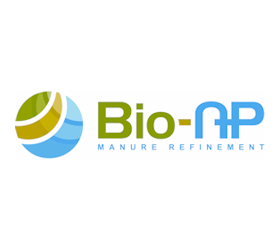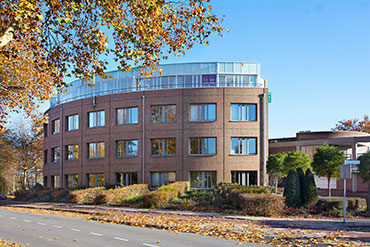Nitrogen is a valuable fertilizer but is nowadays experienced as a problem. This is mainly due to the effects of the emission on nature reserves. We see solutions for these emissions in the form of a nitrogen stripper with which we can reduce emissions to almost 50%.
Nitrogen as a problem
Nitrogen is a problem due to the eutrophication and damage to biodiversity in nature reserves. Steps were taken between 1990 and 2010, resulting in a significant decrease in nitrogen emissions. However, data from RIVM (the Dutch national institute for health and environment) shows that this decrease is stagnating. It also appears that agriculture has the largest share in emissions with 60 percent of domestic production and 40 percent of total emissions. The majority of this emission consists of ammonia.
An important measure which makes it possible to reduce the emission of nitrogen is to adjust the stable floor. Depending on the type of stable floor, it is possible to reduce the emission of a stable by up to 50 percent. This can have a major impact nationwide because the manure floor, including the storage of the manure, is responsible for about half of the total ammonia emissions in agriculture. In 2015 this was 111 kilotons of ammonia.
However, in the current situation there is a hefty price tag for adjusting the stable floor. For an average farmer with 150 cows it comes down to approximately 100,000 euros. For this calculation we looked at a system in which rubber mats are placed over the existing grids in the stable. This approach ensures that the farmer can continue to use the manure cellar under the stable as a storage facility for manure. This approach works well but must be done carefully. Otherwise, gas may form in the manure. Moreover, this does not provide the farmer with any additional income.
Fermentation as a solution
A better solution is to make use of this gas formation. A farmer creates an extra source of income from the manure by fermenting the manure in a biogas installation and selling the sustainable energy. In this way, a farmer not only generates sustainable energy but also reduces ammonia emissions. A good example of this sustainable solution is the biogas hub in Noord-Deurningen (the Netherlands) of which 6 dairy farmers are now affiliated.
Unfortunately, the measures described above do not sufficiently solve the nitrogen problems of Dutch agriculture. Although the emission in the stable decreases, the emission when applying the manure on land remains the same or even increases. The use of a nitrogen stripper further reduces the emission. Examples include our Bio-NP at Hans Nijkamp in Bathmen or the installation of Jumpstart (an initiative Friesland Campina) at Jack van Poppel in Brabant. These plants produce fertilizer from manure in the form of ammonium sulphate.
A reduction of between 40 and 50 percent on the total nitrogen emission can be achieved by fermenting fresh manure and stripping the thin fraction of digestate. This can be deduced based on research by the WUR. Ammonium sulfate is currently a fertilizer that still has harvesting status. Ammonium sulfate is soon expected to become an official fertilizer.
The future
The combination of fermentation and the use of a nitrogen stripper could potentially break the current deadlock in nitrogen emissions. We can take major steps towards sustainable livestock farming. In addition to his normal activities, the farmer also produces biogas that can be used to make this society free of natural gas. We see however that the current payback period is approximately ten years. This is based on the expected SDE + rates for the supply of biogas to third parties in the form of a biogas hub. This payback period is not very interesting for farmers.
The first pilots have been built, now it is time for the big roll-out. With an extra reward for the avoided nitrogen, this roll-out can take place faster. An investment subsidy of 50 percent on the necessary adjustments offsets the extra costs for the farmer. Thus creating a profitable case for the farmer. The businesscase could even be more profitable if the harvest status of ammonium sulphate is also legalized from this application.
About this article
7 November 2019 / Author: Dr. Ir. René Cornelissen

